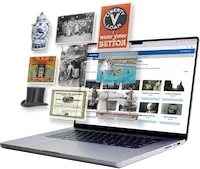Unveiling Archival Impact

Margot Note
The transformative power of storytelling depends upon the strategic choices that top archival performers make and the shift from being record-keepers to change agents.
In the digital age, where data flows like a ceaseless river, archivists play a crucial role in shaping the narrative of organizations. Beyond the cold grasp of metrics, these guardians of records embark on a journey to infuse life into data. Crafting compelling archival narratives becomes their tool, unraveling the true impact of their work.
The Power of Archival Narratives
At the heart of archival impact lies the art of storytelling. Archivists are weavers of tales that breathe life into statistics. Archivists create a connection that transcends the analytical realm by contextualizing data with narratives. These stories illustrate the significance of their work and humanize data points, making them not just numbers but memorable episodes in the organizational journey.
Through storytelling, archivists transform raw statistics into a vivid tapestry of change. The impact of their efforts becomes tangible, resonating with stakeholders on a personal level. The archivist’s role, once confined to preserving records, now extends to shaping the organization’s narrative. This shift from passive record-keeping to active storytelling marks a paradigm change in how archivists contribute to the organizational ecosystem.
Value Enhancement Strategies
Strategically allocating resources is the first step in questioning the archives’ focus. By advocating for the cessation or reduction of low-value activities, archivists can free up time and attention to concentrate on existing high-value tasks. Simultaneously, identifying and pursuing new opportunities for high-value activities encourages a proactive approach to evolving with emerging trends and demands. This approach implies a commitment to optimizing the current workflow while remaining open to innovation and adaptation.
Archivists should question the archives’ operational effectiveness. An emphasis on exploring new strategies and implementing innovative tools suggests a commitment to continuous improvement. This approach aims to enhance the quality and efficiency of the chosen activities, aligning the archives with contemporary best practices. By adopting new techniques and tools, archivists can position themselves as forward-thinking institutions capable of meeting evolving challenges in the field.
Finally, archivists can demonstrate the archives’ value. Values include relational assets, such as reputation and reach, external and internal relationship development, archival assets encompassing tangible collections and services (as well as intangible organizational and individual worth), archival virtue involving contributions to common goods and social capital beyond the department, and archival momentum related to resources gained or saved. By recognizing and cultivating these aspects, archivists can showcase their multifaceted value within their internal operations and broader impact on research, learning, and societal well-being.
Honing in on Strategic Choices
To measure archival impact, archivists must transcend the allure of metrics and dive into strategic choices. Top archival performers understand the value of focused efforts and resource allocation. They choose projects and tasks that align with organizational goals. By limiting their focus, these archivists excel in their endeavors, delivering value and generating impactful results.
Redesigning work processes becomes pivotal in this pursuit of excellence. Reshaping strategies emphasize value delivery. Archivists must revisit their metrics and methodologies, ensuring they align with evolving organizational goals and stakeholder needs. Adapting and being flexible in measurement strategies empowers archivists to respond to shifting priorities, reinforcing the enduring relevance of their contributions.
The true metamorphosis occurs when archivists embrace the challenge of measuring impact. The quantifiable proof of their value lies in numbers and the multifaceted impact landscape.
Understanding the broader implications of their work, archivists integrate insights into decision-making processes. The impact is no longer confined to preserving historical records; it becomes a guiding force in shaping the present and informing the future. Armed with the ability to measure impact, archivists emerge as indispensable contributors whose efforts enrich the organization’s narrative.
Embracing Improvement as an Ongoing Process
Measuring impact demands a commitment to continuous improvement. Archivists, as change agents, embark on a journey of perpetual refinement. They stay ahead of the curve by revisiting metrics, methodologies, and strategies.
The dynamic nature of the digital landscape requires archivists to be agile and responsive. Flexibility in measurement strategies enables them to navigate the complexities of evolving priorities. This adaptability showcases the relevance of their contributions and positions archivists as proactive architects of organizational change.
Archivists wield the power to transcend the ephemeral and leave an indelible mark. Beyond the confines of metrics, storytelling becomes the brushstroke that paints a vivid picture of impact. Strategic choices in project selection and resource allocation amplify their influence. Embracing continuous improvement ensures their relevance endures, making archivists indispensable long-term contributors to organizations.

Margot Note
Please join us for a free webinar, Measuring Archival Impact, THIS WEDNESDAY, November 13, 2024 at 11 a.m. Pacific / 2 p.m. Eastern. (Can’t make it? Register anyway and we will send you a link to the recording and slides afterwards). Register now or call 604-278-6717.
Never miss another post. Subscribe today!
Similar Posts
Principles of Archival Preservation: Agents of Deterioration and Preservation Strategies
Explore the 5 key agents of deterioration and essential archival preservation strategies to safeguard your collections for future generations.
Creating Effective Archival Finding Aids: Tips for Writing Clear Descriptions
Clear concise archival descriptions improve accessibility support discoverability and enhance the research experience. In this article we’ll explore best practices for crafting finding aids that are both informative and engaging.
Balancing Collection- and
Item-Level Information in Archival Description
How much detail is enough when describing an archival collection? Finding the right balance between broad overviews and detailed item descriptions ensures accessibility research efficiency and proper context for archival materials.
Best Practices in Archival Description
Standards like ISAD(G) DACS and EAD guide archivists in creating clear consistent descriptions for easier access. Learn more about each of these frameworks and how they enhance visibility and research.







Leave a Comment
Comments are reviewed and must adhere to our comments policy.
0 Comments